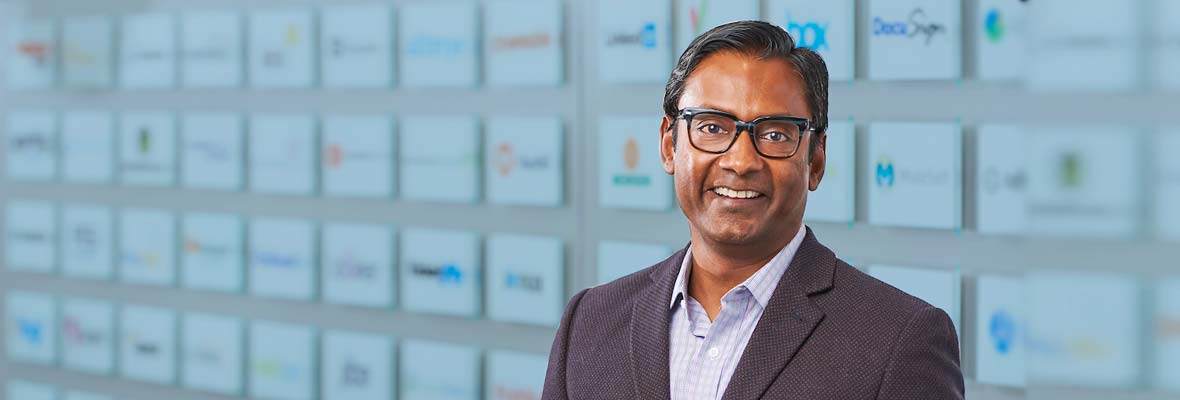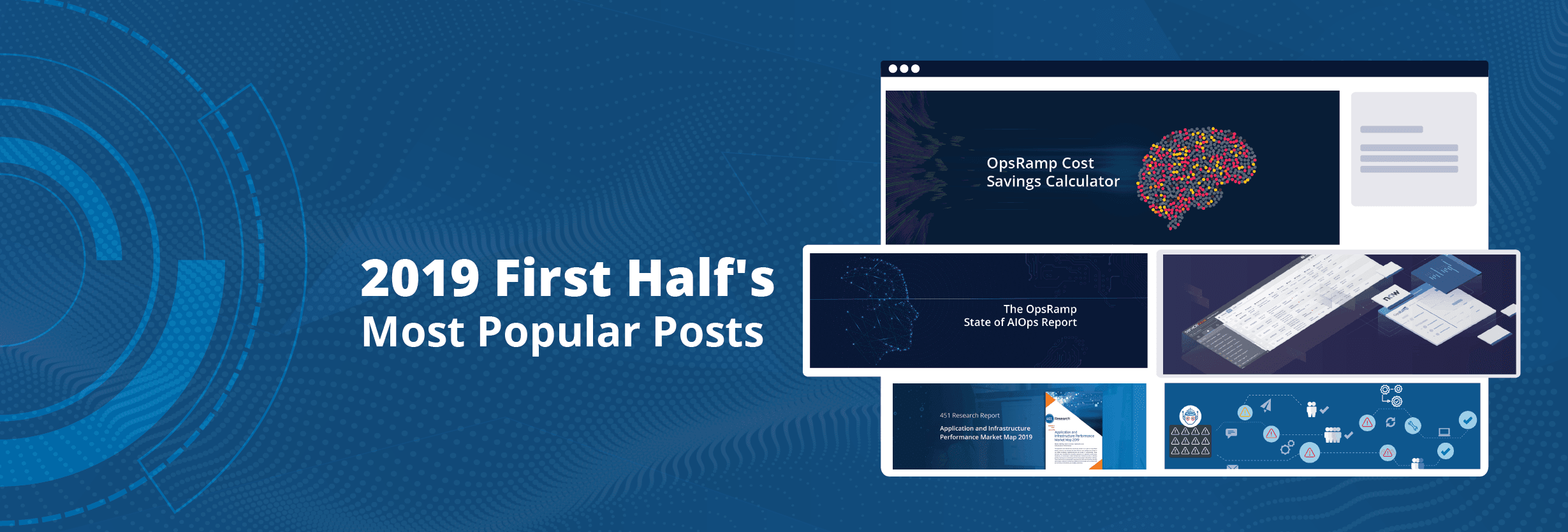Today on the blog, we chat with Jai Das, president, co-founder and managing director of Sapphire Ventures, a venture capital firm in Silicon Valley and an investor in OpsRamp. Jai has 20 years of experience in helping companies scale and become market leaders, including Alteryx, Box, ExactTarget. Five9, Mulesoft, Nutanix, and Square. Prior to joining Sapphire Ventures in 2006, Jai worked at Oracle, Intel Capital, Agilent Ventures, and MVC Capital. We asked him about VC culture, identifying promising businesses, and the biggest hype in tech today.
OpsRamp: You’ve been working with and funding startups since the dot-com days 20 years ago. What have been the biggest changes in venture investing over that time?
JD: When I started, venture capital was still a boutique industry. Venture investing was not well understood, and it was looked upon as an art or black magic. Over the years, venture investing has become institutionalized just like any other asset class. It is now dominated by platform companies where venture firms provide not only capital but a wide range of services to help entrepreneurs and management teams become successful.
Our company has also evolved toward that. When Sapphire spun out of SAP, we had six people and ~$350 million under management. Fast forward to today and we just announced our fourth growth fund of more than $1 billion and now have ~$4 billion under management. We now have a large team that provides an array of services such as customer engagement, business development and recruiting to our portfolio companies.
The other big change in the industry is how large some of the enterprise software companies have become in terms of market cap and size of revenue. I can recall years ago when I looked at ServiceNow, it was a $10 million revenue company with a valuation near $50 million and now it has over $3 billion in revenues and over $55 billion in market cap. I would’ve never predicted that a help desk company could become this large.
OpsRamp: Through what kind of lens do you evaluate new opportunities today?
JD: That hasn’t changed for me: ultimately the best team wins. The size of the market does matter but it does not matter if they are first in line or second in line. The team that executes the best from a product and go-to-market perspective is the team that ends up winning.
Picking a great team to back is still somewhat of an art. It is partly luck, partly gut and partly looking at the team’s prior successes and failures. In some cases, we backed companies in which we weren’t sure of the company’s potential but there was something about the team, the passion and grit they showed, which made us believe in them. In all these cases the company turned out to be a huge success. We also invest more in later stage companies.
Along with the team, having a business model that is efficient and scalable is also critical. We have never believed in the mindset of “grow at whatever cost.” It’s not about spending a bunch of money and then later figuring out what worked. You need to grow fast but also efficiently so you know whether to put your next dollar in sales, marketing or R&D. This has always been critical in public markets, even before what happened at WeWork. In the private markets there has been an end to all the free capital that had been available the last two or three years and investors are now asking companies to grow more efficiently and cut cash burn. It’s good to see that private investors have started to have the same mantra about efficient growth as we do.
Jai shares more about how to grow efficiently here.
OpsRamp: What does growing efficiently mean?
JD: Before growing efficiently, you must be able to measure things very diligently, such as the true cost of sales which includes salaries for sales engineers and marketing costs and customer support costs as well as true marketing costs, pipeline generation, lead conversions, churn and so on. These metrics will tell you whether you are charging enough for the product to make a profit.
If you charge $100 for your product and it takes you $100 to build it, $500 to market and sell it and $200 to support it, obviously you won’t make a profit. Business isn’t rocket science. But you’ve got to measure everything and be diligent about how you look at the data.
OpsRamp: What are the biggest red flags for you when deciding whether to work with a startup?
JD: Culture. That is the fabric that holds people together and we spend a lot of time trying to understand the culture of a company we would potentially invest in. Is the culture collaborative and authentic and do people have a voice even at the lower ranks?
We don’t give a term sheet until we have spent a lot of time with the management team. We always take the entire management team out to dinner before we put forth a term sheet. We have passed on investing in companies based on interactions during these dinners, because we didn’t believe in their culture or that the company was going down the right path.
OpsRamp: How do you see Sapphire Ventures evolving in the next year or two?
JD: We have a large firm now with multiple investment teams, along with our portfolio growth team and of course our finance team. We use Objectives and Key Results (OKRs) to drive our business, based on the goals of our individual investment arms and functions. We measure ourselves on these OKRs every quarter.
As an investment management firm, our top goal is to provide the best return for our investors. The challenge is that it can take five or six years to see a return. So, in the interim we try to be a value-add to our limited partnerships (LPs) and portfolio companies. We also operate in three geographies, and we need to make sure we are as strong in Israel and Europe as in the U.S.
As we grow, just like our portfolio companies, maintaining our culture is extremely important. We have in place the tenets of being authentic, collaborative and to have an attitude of winning with integrity. This year we added excellence as a goal for everything we do.
OpsRamp: What’s over-hyped right now in tech?
JD: There is a lot of hype in AI, machine learning and automation. There’s a reason for this because that is how new technology has always worked. We overbuilt railroads for the longest time when the railways were just emerging. The same thing happened with the Internet and it was overhyped. Lots of companies went bust in the dot-com bubble but the concepts that went bust like Pets.com became viable businesses like Chewy.com a few years later.
Similarly, people are now saying that AI, robotic process automation (RPA) and intelligent automation will solve everything. Of course, these technologies will not reach their hyped-up potentials immediately but eventually they will do a lot of the mundane drudge work that we do every day and give us more time for creative work and leisure.
Change happens slowly until one day a few years later you wake up and your life looks a lot different. Looking back a year does not seem that dramatically different than the present but looking back five to seven years will make you realize how fast technology is changing and how much we do things differently now than we did then.
OpsRamp: With cloud maturity, IT infrastructure technologies have become more critical for many companies. How do you see this sector evolving?
JD: There is a huge trend in every company becoming a software company. For instance. Capital One’s biggest competitor is not Chase, but a new mobile bank like Chime. These big established companies must think like a technology company and build up cloud infrastructure similar to what Google or Facebook have.
Unlike Google or Facebook, these companies also have legacy on-prem infrastructure that they need to manage along with their new cloud infrastructure. So they need a solution like what OpsRamp provides, that manages both their legacy and new technologies. Also, these companies are not able to hire the best DevOps folks and therefore depend on AIOps solutions from companies like OpsRamp that use AI and machine learning to find and troubleshoot problems. OpsRamp is very well positioned as more and more companies must manage hybrid IT infrastructure with fewer and fewer people.
OpsRamp: What do you do to blow off steam—or to relax?
JD: I spend a lot of time with my kids who are both teenagers and are growing up fast. I also ride a Ducati motorcycle that I take out once in a while for a spin in the Bay Area hills. Finally, I am a big Warriors fan and try to see as many games as possible.
Next Steps:
- Read our previous guest interview with Michael Krigsman of CXOTalk.
- Subscribe to the OpsRamp Blog!
- Do the math with our ROI Calculator and see how much you can save with OpsRamp.





